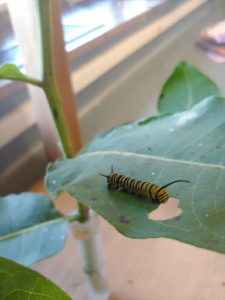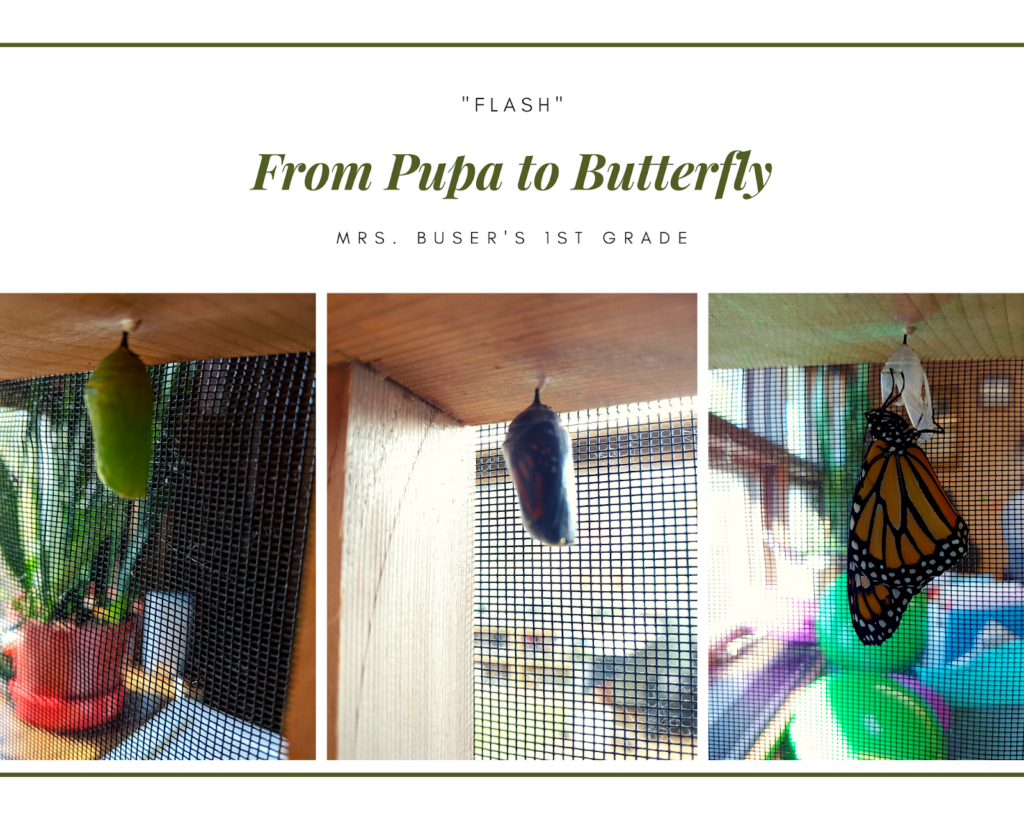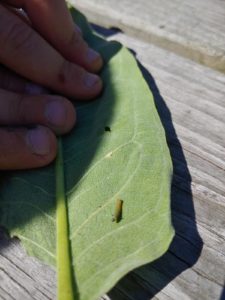First Instar to the Right, and Straight on to Learning!
“All our knowledge begins with the senses, proceeds then to the understanding, and ends with reason. There is nothing higher than reason.” –Immanuel Kant
By: Kayla Buser & Amy Pollard
When the Riveredge School was first dreamed of, it was built upon the natural curiosity children express towards the world around them. Three pillars – inquiry, nature, and community – form the foundation of the educational philosophy. This is a far cry from what is seen in most public schools in the United States today. How does this work? Will the students learn what they need to learn as stipulated by state standards?
The answer is more complicated than remembering your multiplication tables and regurgitating facts. The answer lies in tapping into that natural curiosity of the world around them, encouraging a love of learning, and then adding in the academic requirements into the lesson. It is about encouraging the children to love learning. As Socrates is attributed to saying, “Education is kindling of a flame, not the filling of a vessel.” We strive to kind le the flame of learning by harnessing a child’s curiosity. Mrs. Buser’s 1st grade class had an opportunity this fall to do just that.
le the flame of learning by harnessing a child’s curiosity. Mrs. Buser’s 1st grade class had an opportunity this fall to do just that.
In early September, one of the 1st-grade students found a monarch caterpillar. This monarch caterpillar was still in its 1st instar out of 5. As a class, the first graders adopted the caterpillar and named it Flash. Over the next few weeks, the students learned about caterpillars through all types of sources including videos, books, websites like https://journeynorth.org/, and staff from Riveredge Nature Center. One of the weekend assignments for the 1st-grade students included watching educational and informational videos about monarchs and then writing down some of the questions they had after watching the videos. Some of the questions included; Where do butterflies go in winter? How long do they live? and How do they transform into a butterfly?. The students spent time learning answers to some of their questions. For example, they learned that the monarchs travel to a specific place in Mexico for the winter. In this location, thousands upon thousands of monarchs gather for the winter to hibernate.

As the weeks went by, the 1st-grade students learned more and more about these wonderful creatures and got to watch Flash grow through all 5 instars. The students also got to see the caterpillar in the pre-pupa stage, where the caterpillars hang upside down in a “J” form. The students also got to see the pupa stage, which is when the chrysalis has formed. After about a week and a half in the chrysalis, the students could see the wings of the newly transformed monarch. In early October, while writing in their weekly journals, the 1st-graders noticed that the butterfly had emerged! All observed the crumpled wings and watched as the monarch pumped fluid from the abdomen to the wings to pump them up and dry them. The next day, 1st-graders got to see what goes into tagging and releasing a monarch with the help of Ms. Mary Holleback from Riveredge Nature Center. Students continued to have questions about monarchs, which they were able to ask Ms. Mary. Over the course of about a month, 1st-grade students were able to raise a monarch while asking and answering their own questions along the way!

